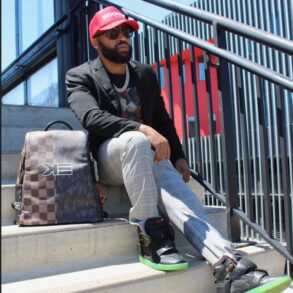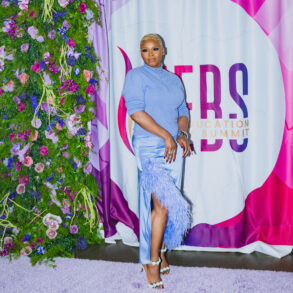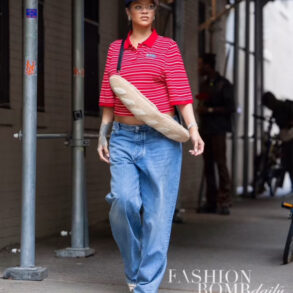Jesse Grant/Getty
- Champion has regained popularity among Gen Zers and millennials.
- But the brand’s sales are falling behind, and HanesBrands is considering selling Champion.
- Here’s how Champion became popular among athletes, college students, and hip-hop artists.
Champion’s red, white, and blue “C” logo is solidified in pop-culture history.
The brand has lasted more than 100 years, outfitting NBA athletes like Michael Jordan and hip-hop legends like 50 Cent.
But Champion’s sales have declined in recent years, and its popularity among American consumers is dwindling. Stephen Bratspies, CEO of parent company HanesBrands. told investors that the company expects the rest of the year to be strained for the brand.
“The combination of soft category dynamics and the near-term impact from our strategic brand-related actions continued to weigh on US Champion sales,” he said in an August earnings call.
In September, HanesBrands announced that it is considering selling Champion “to ensure HanesBrands is best positioned to grow and create value for shareholders.”
Champion is one of the oldest American sportswear brands, and it claims to have invented both the hoodie sweatshirt and the sports bra. So how did this iconic brand fall behind? Here’s how Champion became popular, why it lost its grip, and where it is today.
Champion became popular among college students and athletes
Rick Friedman/Getty
Champion was founded in 1919 by the Feinbloom family as Knickerbocker Knitting Mills, based in Rochester, New York. The family later renamed the company Champion Knitting Mills Inc.
The brand found its first major customer base on college campuses. Champion provided sports uniforms for Wentworth Military Academy in the ’20s, and claims it invented the first hoodie sweatshirt in the 1930s as a warm-up garment for athletes.
The company began printing college insignias on T-shirts and sweatshirts so students could display their school spirit, paving the way for a new category of leisure apparel that is still popular today.
In 1956, Champion began printing its “C” logo on the left sleeve of its sweatshirts. Today, the company is known for its collegiate apparel sold in university bookstores across America.
In 1967, Champion designed a mesh nylon jersey for football players, followed by basketball, track, and lacrosse jerseys. The brand continued to solidify its place in the sports world by manufacturing the official jerseys worn by NBA players from 1989 to 2001. Champion also provided jerseys for NFL and US Olympic teams.
Is Champion still cool today?
Jean Baptiste Lacroix/Getty
Champion gained mainstream popularity in the late 80s to early 90s thanks to a wave of hip-hop artists who brought sportswear from the basketball court to the streets.
But by the early 2000s, athletic brands were saturating the market and Champion began to fall behind juggernauts like Nike, Adidas, and New Balance which were popular for their sneakers.
Then, around 2015, a new category of apparel known as athleisure broke out. Brands took the sportswear concept and made it less technical and more casual for everyday wear.
A few years later, young millennials and Gen Zers brought back nostalgia for ’90s streetwear brands like Champion, Fila, and Reebok. Champion’s affordable clothing line C9 was sold in Target until 2019.
From 2020 to 2022, Champion had 10 brand collaborations and partnerships, including with the Beastie Boys, Harley-Davidson, and Muhammad Ali. Celebrities like Kylie Jenner to Chance the Rapper have worn Champion in recent years.
Although Champion is still a recognized brand in pop-culture today, the company’s sales are falling behind amid a competitive activewear market. HanesBrands’ activewear second-quarter sales declined 19% compared to the same quarter last year.
This post was originally published on this site be sure to check out more of their content.








